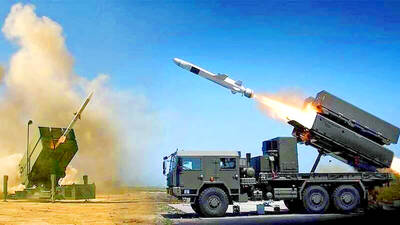Scientists have for the first time developed a brain implant that allows people to control electronic devices by thought alone, it emerged on Wednesday.
The remarkable breakthrough offers hope that people who are paralyzed will one day be able to independently operate artificial limbs, computers or wheelchairs. The implant, called BrainGate, allowed Matthew Nagle, a 25-year-old Massachusetts man who has been paralyzed from the neck down since 2001, to control a cursor on a screen and to open and close the hand on a prosthetic limb just by thinking about the relevant actions.
The movements were his first since he was stabbed five years ago. The attack severed his spinal cord.
"The results hold promise to one day be able to activate limb muscles with these brain signals, effectively restoring brain to muscle control via a physical nervous system," said John Donoghue, director of the brain science program at Brown University, Rhode Island, and chief scientific officer of Cyberkinetics, the company behind the brain implant.
Donoghue's work was published yesterday in Nature. He describes how, after a few minutes spent calibrating the implant, Nagle could read e-mails and play the computer game Pong. He was able to draw circular shapes using a paint program and could also change channel and turn up the volume on a television, even while talking to people around him. After several months, he could also operate simple robotic devices such as a prosthetic hand, which he used to grasp and move objects.
The BrainGate system uses a 4mm2 electronic chip, called the neuromotor prosthesis, inserted into the motor cortex of the brain, the area that controls voluntary movement.
The chip has 100 electrodes, each thinner than a single human hair, which penetrate 1mm into the surface of the brain, where they pick up the electrical activity of the cells. The resulting signals are fed into a computer, which interprets the meaning in real time and then controls objects such as artificial limbs, computer cursors or wheelchairs.
"What is also encouraging is the immediate response from the brain," Donoghue said. "When asked to `think right' or `think left,' patients were able to change their neural activity immediately. And their use of the device is seemingly easy. Patients can control the computer cursor and carry on a conversation at the same time, just as we can simultaneously talk and use our computers."
The brain's 100 billion neurons fire between 20 and 200 times a second, and converting the buzz of electrical activity in the brain into meaningful instructions proved a tough task.
"We had a general idea what they were doing but in a spinal cord injury person, we weren't sure they would be behaving in a normal way," Donoghue said.
His research team found that the brain cells in Nagle's motor cortex were still active, several years after his spinal cord injury had severed their connection to the rest of the nervous system.
"Some researchers might have predicted that this part of the brain would alter its function dramatically after the spinal cord was injured. But that doesn't seem to be the case. The movement-related signals are still there," said Leigh Hochberg, a neurologist at Massachusetts general hospital and a co-author of the new research.

AIR DEFENSE: The Norwegian missile system has proved highly effective in Ukraine in its war against Russia, and the US has recommended it for Taiwan, an expert said The Norwegian Advanced Surface-to-Air Missile Systems (NASAMS) Taiwan ordered from the US would be installed in strategically important positions in Taipei and New Taipei City to guard the region, the Ministry of National Defense said in statement yesterday. The air defense system would be deployed in Taipei’s Songshan District (松山) and New Taipei City’s Tamsui District (淡水), the ministry said, adding that the systems could be delivered as soon as the end of this year. The US Defense Security Cooperation Agency has previously said that three NASAMS would be sold to Taiwan. The weapons are part of the 17th US arms sale to

SERIOUS ALLEGATIONS: The suspects formed spy networks and paramilitary groups to kill government officials during a possible Chinese invasion, prosecutors said Prosecutors have indicted seven retired military officers, members of the Rehabilitation Alliance Party, for allegedly obtaining funds from China, and forming paramilitary groups and assassination squads in Taiwan to collaborate with Chinese troops in a possible war. The suspects contravened the National Security Act (國家安全法) by taking photos and drawing maps of key radar stations, missile installations and the American Institute in Taiwan’s headquarters in Taipei, prosecutors said. They allegedly prepared to collaborate with China during a possible invasion of Taiwan, prosecutors said. Retired military officer Chu Hung-i (屈宏義), 62, a Republic of China Army Academy graduate, went to China

INSURRECTION: The NSB said it found evidence the CCP was seeking snipers in Taiwan to target members of the military and foreign organizations in the event of an invasion The number of Chinese spies prosecuted in Taiwan has grown threefold over a four-year period, the National Security Bureau (NSB) said in a report released yesterday. In 2021 and 2022, 16 and 10 spies were prosecuted respectively, but that number grew to 64 last year, it said, adding that the Chinese Communist Party (CCP) was working with gangs in Taiwan to develop a network of armed spies. Spies in Taiwan have on behalf of the CCP used a variety of channels and methods to infiltrate all sectors of the country, and recruited Taiwanese to cooperate in developing organizations and obtaining sensitive information

BREAKTHROUGH: The US is making chips on par in yield and quality with Taiwan, despite people saying that it could not happen, the official said Taiwan Semiconductor Manufacturing Co (TSMC, 台積電) has begun producing advanced 4-nanometer (nm) chips for US customers in Arizona, US Secretary of Commerce Gina Raimondo said, a milestone in the semiconductor efforts of the administration of US President Joe Biden. In November last year, the commerce department finalized a US$6.6 billion grant to TSMC’s US unit for semiconductor production in Phoenix, Arizona. “For the first time ever in our country’s history, we are making leading edge 4-nanometer chips on American soil, American workers — on par in yield and quality with Taiwan,” Raimondo said, adding that production had begun in recent